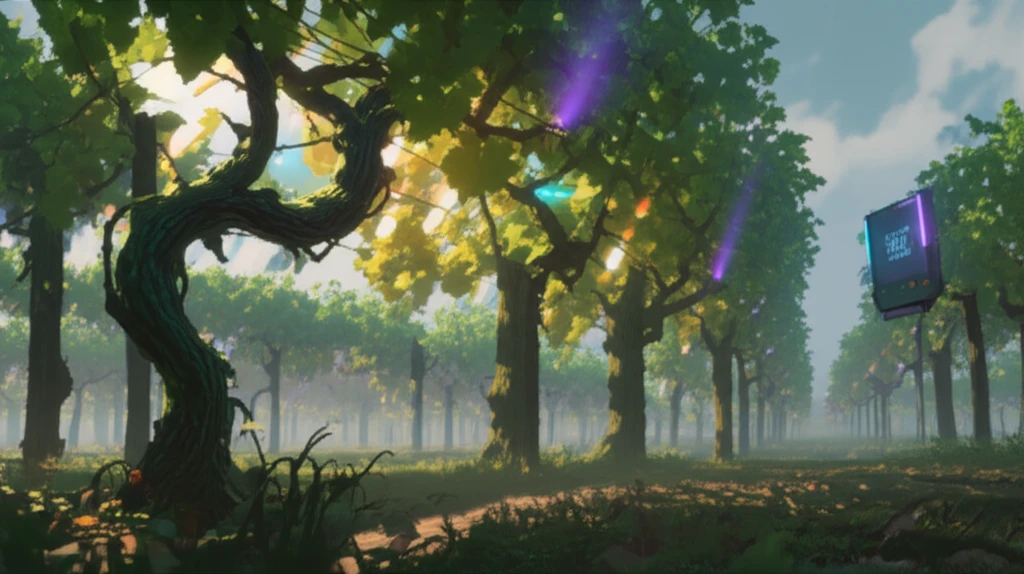
Grapevine Whisperers: How Tech Can Unlock the Secrets to Healthier Vineyards
"Discover how cutting-edge imaging and analysis techniques are revolutionizing grapevine water management for better yields and sustainability."
For centuries, grape cultivation has relied on intuition and experience, but modern technology is changing the game. Irrigation is the lifeblood of a vineyard, directly influencing the growth, development, and ultimate yield of grapevines. However, striking the right balance isn't always easy. Too little water leads to stress, impacting fruit quality and potentially causing irreversible damage, while overwatering can create its own set of problems. The key is precision, and that's where innovative tools come into play.
Traditional methods of assessing water stress, such as pressure bombs and leaf porometers, are time-consuming and impractical for large-scale vineyard management. These techniques only provide a snapshot of individual plants, making it difficult to get a comprehensive overview of the entire vineyard. This is especially crucial in commercial applications where efficiency and accuracy are paramount.
Fortunately, the field of precision agriculture is rapidly evolving, offering exciting new solutions for monitoring grapevine health. Among these advancements, hyperspectral imaging stands out as a promising technology for assessing water content and detecting early signs of stress. By analyzing the light reflected from grapevine leaves, researchers can gain valuable insights into their physiological state, paving the way for more informed irrigation decisions.
Decoding Grapevine Health: How Hyperspectral Imaging Works

Hyperspectral imaging is like giving plants a voice, allowing growers to 'see' beyond what the naked eye can perceive. By measuring the reflectance of light across a wide spectrum of wavelengths, this technology captures a wealth of information about the chemical composition and physical properties of grapevine leaves. Think of it as a sophisticated diagnostic tool that can reveal subtle changes in plant health long before visible symptoms appear.
- Capturing the Data: A hyperspectral camera is used to scan the grapevine leaves, capturing the reflected light at hundreds of different wavelengths.
- Analyzing the Reflectance: The resulting data is then processed to create a detailed spectral signature for each leaf, revealing its unique reflectance pattern.
- Extracting Key Features: Researchers extract relevant information from the spectral signature, such as specific wavelengths or vegetation indices known to be associated with water content.
- Building Predictive Models: Using statistical techniques, these extracted features are then used to build models that can predict the water content of the grapevines with remarkable accuracy.
The Future of Grapevine Management: Data-Driven Decisions
The research underscores the potential of integrating reflectance data with GLCM texture analysis, showcasing improved predictive capabilities. As technology continues to evolve, Vis/NIR hyperspectral imaging stands out as a method to enhance grape vine management. Future studies incorporating larger sample sizes and diverse grape varieties will further refine these models, paving the way for broader applications and more sustainable viticulture.
